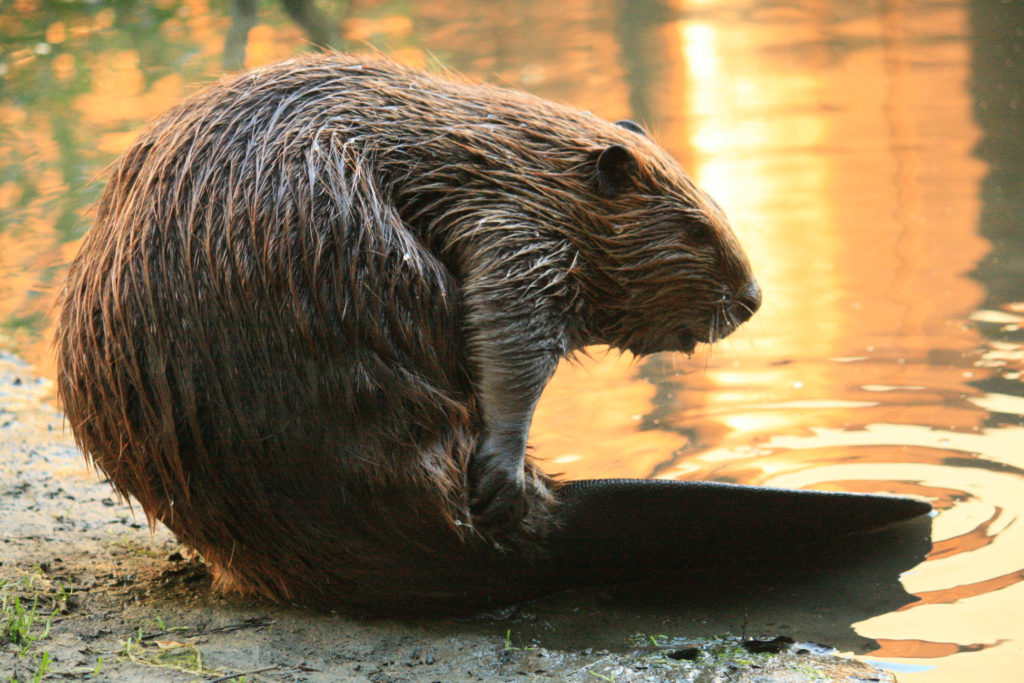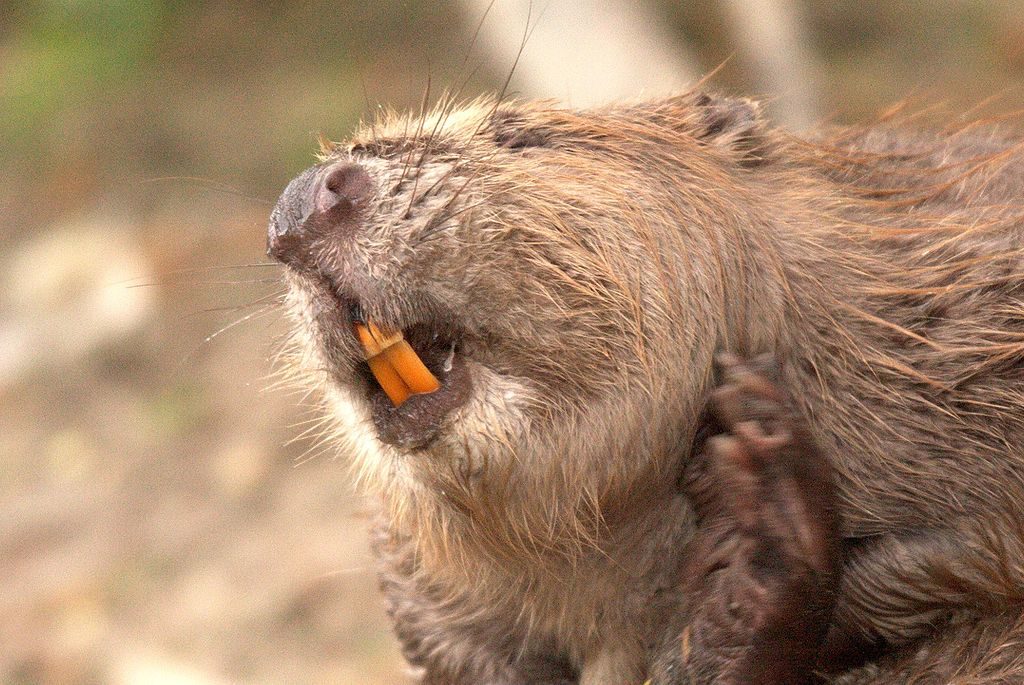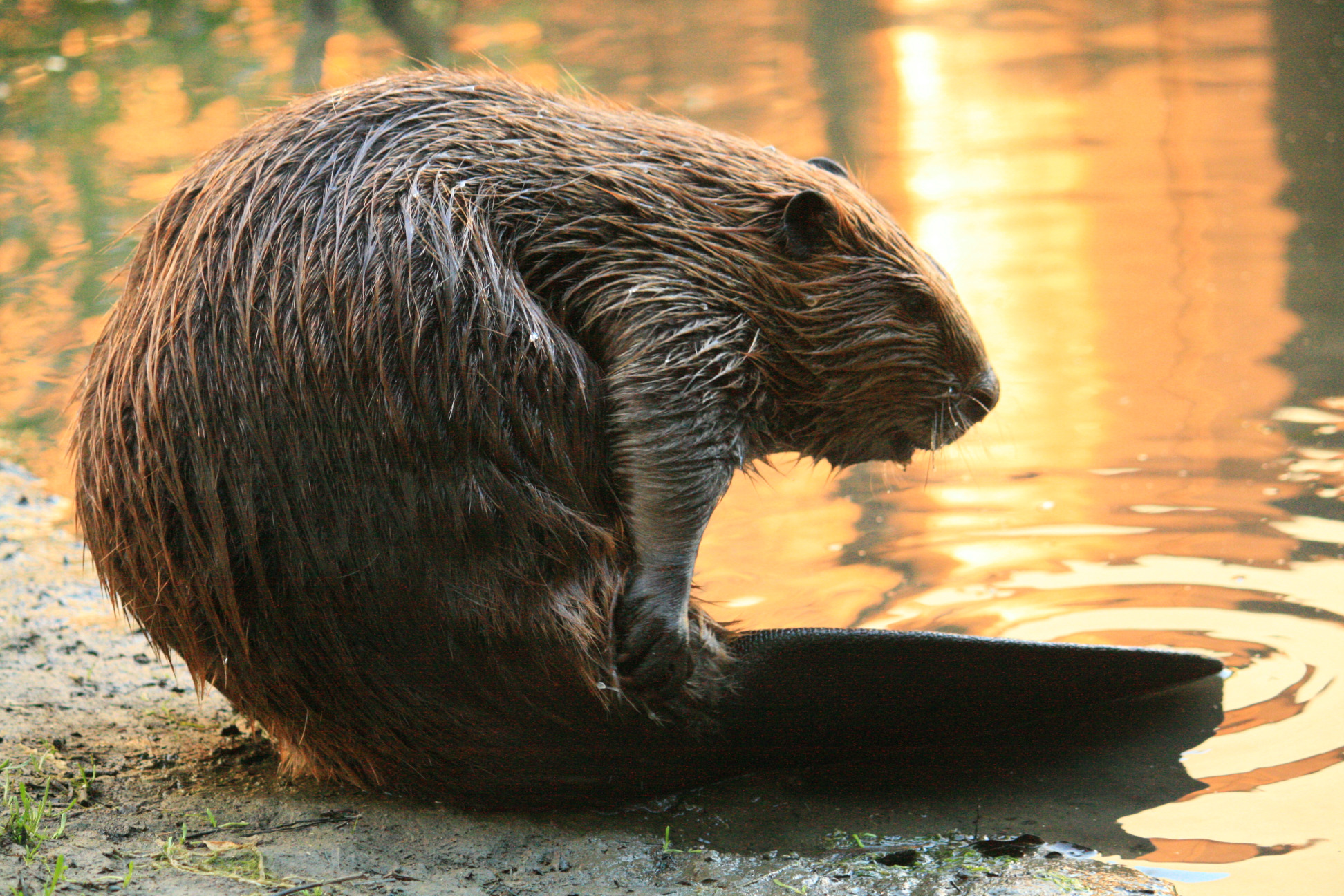Take a look at our list of 25 fun and interesting facts about beavers so you can learn how beavers build their homes, what they eat, where they live and why they build dams.
1. Beavers are primarily nocturnal animals.
2. There are two species of beaver. The first is the Castor fiber or the European, also known as Eurasian, beaver. The second is the Castor canadensis, or the North American beaver.
3. The beavers front teeth never stop growing. They constantly gnaw and chew on wood, which helps keep their teeth from growing too long.
4. Beavers come together to make colonies and to create dams of wood and mud. These dams provide them with still, deep water, in which they can protect themselves against predators such as wolves, coyotes, bears and eagles. Also, they use them dams to gloat building materials and food to their homes.
5. When dams are completed and the ponds formed, the beavers will construct their homes, which are called “lodges,” right in the middle.
6. The lodges, which are shaped like a dome, are constructed from branches and mud. These lodges have underwater entrances, which makes it very tough for other animals to enter.

7. There’s almost always two dens within the lodge. The first is for drying off after entering from the water and the second is the dry den, where a group of four adults and six to eight offspring live.
8. They have a very good sense of hearing, touch and smell. They don’t see well, but they do have a set of transparent eyelids which allow them to see underwater.
9. At one point, there were more than 60 million North American beavers. However, due to hunting for various reasons, the population has declined to around 12 million.
10. Beavers are pretty slow on land but their webbed feet allow them to be great swimmers. Also, they can stay underwater for up to 15 minutes.
11. When a predator is approaching, beavers will slap their large tail on the water as an alarm to signal other beavers in the area to hide or run.
12. They are herbivores, which means that they primarily like to eat wood, such as aspen, cottonwood, willow, birch, maple, cherry and some pondweed and water lilies.
13. Beavers can live up to 24 years in the wild.
14. A fully grown adult beaver can be 3 feet in length and about 55 pounds, or 25 kilograms, in weight. Female beavers are usually a bit larger than the males of the same age.

15. The beaver is the national animal of Canada and is featured on the Canadian five cent coin.
16. Beavers like to build their dams and lodges at night. Apart from sleeping, beavers always keep themselves busy.
17. Apart from using their tail to warn others from predators, they also use it as a rudder for steering when they’re swimming in the water.
18. On land, their tails help them balance and it can be a useful lever to help them drag branches for building dams and lodges.
19. When they’re frightened, beavers will make a hissing noise and show their large front teeth.
20. Unlike other animals, beavers remain very active through the winter months. In fact, they even use their ponds when they are covered with a sheet of ice. They can do this because their body is designed to adapt to the freezing cold water.

21. Beavers are known for taking down large, more mature trees in order to form a solid base for their dam. The younger trees are used as food. However, they will also take down broad leaf trees in order to encourage re-growth closer to home.
22. They stimulate the growth of wooden plants by pruning back the bark as they feed.
23. When beavers take down a tree, they don’t waste any part of it. They eat the bark and buds of the tree. Then, they cut the tree’s trunk and branches into sections that they use for making their dams and lodges.
24. It’s estimated that, in the United States, beavers cause up to $100 million dollars of property damage.
25. The largest dam that was built by beavers is in Wood Buffalo National Park, Alberta, Canada. The dam is 2,790 feet, or 850 meters, long.





One Comment
Pingback:
December 18, 2017 at 7:09 pm